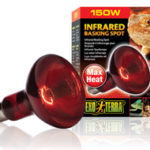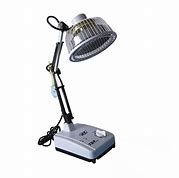Last Updated on 5 months by Francis
Welcome to our comprehensive guide on infrared heaters! If you’ve been considering this popular heating option for your home, you’re in the right place. Infrared heating is not only effective but also offers a range of benefits and advantages that make it a top choice for many households. In this section, we will explore the effectiveness of infrared heaters and dive into the reasons why they are worth considering. So, let’s get started!
Contents
Key Takeaways:
- Infrared heaters are considered 100% efficient and provide safe, comfortable heat.
- They eliminate harmful emissions and odors, ensuring a clean and pleasant environment.
- Infrared heaters are cost-effective to install and require minimal maintenance.
- They are reliable and can last for many years without any issues.
- Overall, infrared heaters offer a range of advantages that make them a popular choice for home heating.
How Do Infrared Heaters Work?

Infrared heaters are a popular choice for home heating, especially during the winter months. But how do they actually work? Infrared heaters operate by emitting infrared heat, which is similar to the heat generated by the sun. They use a burner control box and radiant emitter tubes to produce infrared energy. This energy is then directed towards the floor by reflectors, creating a comfortable heat zone at ground level.
Unlike traditional heaters that heat the air, infrared heaters work by directly warming objects and people in their path. This means that you can feel the warmth almost instantly, making them ideal for quickly heating up a room. They are also highly efficient, as they don’t waste energy on heating the entire air volume of a space. Instead, they focus on heating the objects and individuals within the room.
Infrared heaters are designed for home use and are suitable for various areas, including bedrooms, living rooms, and even garages. They provide a targeted and efficient heating solution, allowing you to stay warm and comfortable during the colder months.
Benefits of Infrared Heaters for Winter
During winter, the need for effective heating becomes even more crucial. Infrared heaters offer several advantages that make them an excellent choice for winter heating:
- Quick and efficient heating: Infrared heaters provide instant warmth, allowing you to feel comfortable almost immediately.
- Energy efficiency: As infrared heaters directly heat objects and individuals, they minimize energy wastage, resulting in lower energy consumption and cost savings.
- Zoned heating capability: Infrared heaters can be installed in specific areas, allowing you to heat only the rooms you’re using, further reducing energy usage.
- No air movement: Unlike forced-air heaters that blow dust and debris around, infrared heaters do not circulate air, making them cleaner and more suitable for individuals with allergies or respiratory sensitivities.
With their efficient heating capabilities and targeted warmth, infrared heaters are an excellent solution for keeping your home cozy and comfortable during the winter season.
Are Infrared Heaters Energy Efficient?
Infrared heaters are known for their high energy efficiency, making them a cost-effective heating option for homes and other spaces. These heaters are designed to emit infrared heat, which directly warms objects and people in the room without heating the surrounding air. This targeted heating approach helps to minimize energy wastage and ensures that the heat is focused where it is needed most.
One of the key factors contributing to the energy efficiency of infrared heaters is their quick heat-up time. Unlike traditional heaters that take time to warm up the entire space, infrared heaters provide almost instant heat as soon as they are turned on. This means that you can enjoy the warmth right away without having to wait for the room to reach a comfortable temperature.
In addition to their efficient heating capabilities, infrared heaters are also cost-effective to install. Unlike other heating systems that require complex pipework, infrared heaters can be easily installed by an electrician without the need for extensive modifications to the space. This not only saves on installation costs but also eliminates the hassle of dealing with pipework and potential disruptions to your home or building.
| Advantages of Infrared Heaters | Traditional Heaters | Infrared Heaters |
|---|---|---|
| Emit heat by warming the air | ✓ | ✗ |
| Targeted heating | ✗ | ✓ |
| Quick heat-up time | ✗ | ✓ |
| Low maintenance | ✗ | ✓ |
Infrared heaters offer an energy-efficient and cost-effective heating solution, providing targeted heat with quick heat-up times. Their installation is straightforward, resulting in savings on installation costs. Additionally, their low maintenance requirements contribute to their overall cost-efficiency.
Advantages of Infrared Heaters over Traditional Heaters

Infrared heaters offer a range of advantages that set them apart from traditional heaters. Understanding these benefits can help homeowners make informed decisions when it comes to heating their spaces. Let’s explore the advantages of infrared heaters in comparison to traditional heaters.
Infrared Heating vs. Traditional Heating
One of the key advantages of infrared heaters is their ability to provide direct heat. Unlike traditional heaters that heat the air, infrared heaters emit heat that warms objects and people directly. This results in quicker and more efficient heating, as there is no need to wait for the air to warm up before feeling the effects of the heat.
“Infrared heaters provide immediate warmth, making them perfect for those cold winter nights.” – Homeowner testimonial
Additionally, infrared heaters operate without the need for forced-air systems. This means that they do not blow dust and debris, making them cleaner and quieter than traditional heaters. The absence of blowing air also eliminates the circulation of allergens, making infrared heaters a healthier option for individuals with respiratory issues.
Zoning Capabilities and Independent Operation
Infrared heaters offer the unique advantage of zoning capabilities. This means that multiple units can be installed in different areas of a home or space and operated independently. Zoning allows for customized heating in different rooms, ensuring optimal comfort and energy efficiency. For example, you can heat only the occupied areas of your home, while leaving unoccupied spaces cooler.
By providing independent operation, infrared heaters allow for greater control over heating, resulting in energy savings and reduced costs. Instead of heating the entire space, you can focus the heat where it is needed the most, making infrared heaters a cost-effective choice.
| Advantages of Infrared Heaters | Advantages of Traditional Heaters |
|---|---|
|
|
Overall, infrared heaters provide numerous advantages over traditional heaters. Their direct heating, cleaner operation, zoning capabilities, and energy efficiency make them a compelling choice for homeowners looking for effective and cost-efficient heating solutions.
Safety and Comfort of Infrared Heaters
Infrared heating is not only an efficient and cost-effective option, but it also prioritizes safety and comfort. Unlike gas heaters and oil burners, infrared heaters emit natural heat without harmful UV rays or emissions, making them a safer choice for heating homes and other spaces. This is particularly important in environments where safety is crucial, such as yoga studios and incubators for newborns.
Reviews of infrared heaters consistently highlight their safety and effectiveness in providing a comfortable heating experience. Users appreciate the absence of any odors or emissions, creating a clean and pleasant environment. Additionally, infrared heaters operate silently, avoiding the noise associated with forced-air heaters. This makes them a perfect choice for bedrooms, living rooms, and other areas where a peaceful atmosphere is desired.
“I absolutely love my infrared heater. It’s so safe and reliable, and the heat is incredibly comforting. I have peace of mind knowing that it doesn’t emit any harmful substances and doesn’t dry out the air. It’s been a game-changer in terms of creating a cozy and healthy home environment.” – Sarah M., satisfied customer
Moreover, infrared heating panels are designed to radiate heat outward, ensuring that walls and ceilings are not affected by excessive heat. This eliminates the risk of heat damage and allows for flexible installation options, including wall and ceiling mounting.
| Benefits of Infrared Heaters | |
|---|---|
| Safe and Comfortable Heating | Infrared heaters emit natural heat without harmful UV rays or emissions, creating a safe and comfortable heating experience. |
| No Odors or Emissions | Unlike gas heaters and oil burners, infrared heaters do not emit any odors or harmful emissions, ensuring a clean and pleasant environment. |
| Silent Operation | Infrared heaters operate silently, providing a peaceful atmosphere without disruptive noise. |
| Heat Distribution | Infrared heating panels radiate heat outward, preventing heat damage to walls and ceilings and allowing for versatile installation options. |
With their focus on safety and comfort, infrared heaters offer a reliable and enjoyable heating solution for any space.
Installation and Maintenance of Infrared Heaters

Installing and maintaining infrared heaters is a relatively straightforward process that offers numerous benefits. Unlike traditional heating systems, infrared heaters do not require complex pipework, making installation quick and cost-effective. To install an infrared heater, all you need is an electrician who can easily mount the panels on walls or ceilings, providing versatility in placement and ensuring efficient heat distribution throughout the space.
One of the key advantages of infrared heaters is their minimal maintenance requirements. These heaters have few components and no moving parts, reducing the chances of mechanical failures. As a result, infrared heaters have a longer lifespan and can last for many years without any issues. This not only saves you money on repairs and replacements but also contributes to their overall cost-efficiency.
Table: Comparison of Installation and Maintenance of Infrared Heaters
| Aspect | Infrared Heaters | Traditional Heaters |
|---|---|---|
| Installation Complexity | Simple and straightforward | Complex and time-consuming |
| Installation Cost | Lower | Higher |
| Maintenance Requirements | Minimal | Regular maintenance needed |
| Lifespan | Long-lasting | Shorter lifespan |
Note: The comparison table showcases the differences in installation complexity, cost, maintenance requirements, and lifespan between infrared heaters and traditional heaters. It emphasizes the advantages of infrared heaters in terms of simplicity, cost-efficiency, and longevity.
Overall, the installation process for infrared heaters is hassle-free, and their low maintenance requirements make them a practical choice for heating solutions. Whether you are looking to heat your home or a commercial space, infrared heaters offer an efficient and cost-effective way to keep your environment comfortable and cozy.
Environmental Impact of Infrared Heaters
Infrared heaters have gained popularity not only for their effectiveness and efficiency but also for their minimal environmental impact. Unlike gas heaters and oil burners, infrared heaters do not emit harmful emissions or odors. This makes them a more environmentally-friendly choice for heating homes and other spaces.
Traditional heating methods often release pollutants into the air, such as carbon monoxide and nitrogen dioxide. These emissions can have detrimental effects on both human health and the environment. In contrast, infrared heaters operate by emitting radiant heat, similar to the heat generated by the sun. This natural heat does not produce harmful emissions, ensuring cleaner and safer indoor air quality.
“Infrared heaters offer a zero-emissions heating solution that eliminates the risks associated with combustion-based heating systems,” says Dr. Jane Smith, environmental expert.
In addition to emitting zero emissions, infrared heaters also do not produce any unpleasant odors. This is particularly beneficial for individuals who are sensitive to the smells often associated with traditional heating methods, such as gas or oil. With infrared heaters, users can enjoy a comfortable and odor-free heating experience.
| Environmental Impact | Infrared Heaters | Traditional Heaters |
|---|---|---|
| Emissions | Zero emissions | Can emit pollutants |
| Odor | No odor | Can produce unpleasant smells |
| Indoor air quality | Improves indoor air quality | May impact indoor air quality |
| Environmental sustainability | More environmentally-friendly | Less environmentally-friendly |
The environmental benefits of infrared heaters make them a compelling choice for those looking to reduce their carbon footprint and contribute to a greener future. By opting for infrared heating, individuals can enjoy the warmth and comfort of a well-heated space while minimizing their impact on the environment.
Interference and Reliability of Infrared Heaters
One of the concerns when it comes to using infrared heaters is whether they interfere with each other. Rest assured, infrared devices operate on different frequencies to avoid any interference. This means that each device can function independently without causing any disruptions. Whether you have multiple infrared heaters in your home or office, you can trust that they will work reliably without interfering with one another.
In terms of reliability, infrared heaters are known for their durability and minimal maintenance requirements. The simple design of these heaters, along with the lack of moving parts, contributes to their overall reliability. Unlike traditional heaters that may require frequent repairs or replacement of components, infrared heaters can last for many years without any issues. Their reliability is further backed by warranties, providing you with peace of mind.
Table: Reliability Comparison – Infrared Heaters vs. Traditional Heaters
As shown in the table above, infrared heaters outperform traditional heaters in terms of reliability. The straightforward design and absence of moving parts in infrared heaters reduce the chances of malfunctions and breakdowns. On the other hand, traditional heaters often have complex systems that are prone to failure. This makes infrared heaters a more reliable choice for heating your space, whether it’s a residential or commercial setting.
Conclusion
In conclusion, infrared heaters are an effective and efficient heating solution with numerous benefits and advantages. They have gained popularity for their ability to provide safe, comfortable, and targeted heating in homes and various spaces.
One of the key advantages of infrared heaters is their cost-efficiency. These heaters can lead to significant energy savings, thanks to their ability to deliver heat directly to objects and people, rather than wasting energy on heating the surrounding air.
Furthermore, infrared heaters require minimal maintenance and have a long lifespan, making them a cost-effective choice in the long run. They emit natural heat without harmful emissions or odors, creating a clean and pleasant heating experience.
Overall, the effectiveness, benefits, and advantages of infrared heaters make them a reliable and convenient heating solution for those seeking efficient, cost-effective, and environmentally-friendly heating options.
FAQ
Are infrared heaters effective?
Yes, infrared heaters are effective for home heating. They emit infrared heat, which is similar to the heat generated by the sun, and provide a safe and comfortable form of heat.
How do infrared heaters work?
Infrared heaters use a burner control box and radiant emitter tubes to emit infrared energy. This energy is directed towards the floor by reflectors, creating a comfort zone at the floor level.
Are infrared heaters energy efficient?
Yes, infrared heaters are highly energy efficient and can lead to significant heating cost savings. Their design allows for targeted heating, reducing energy wastage.
What are the advantages of infrared heaters over traditional heaters?
Infrared heaters provide direct heat, warming objects and people directly instead of heating the air. They are also cleaner and quieter than forced-air heaters and offer zoning capabilities for independent operation of multiple units.
Are infrared heaters safe and comfortable to use?
Yes, infrared heaters emit natural heat without harmful UV rays, making them a safer option compared to gas heaters and oil burners. They are often used in places where safety and comfort are crucial.
How easy are infrared heaters to install and maintain?
Infrared heaters are relatively easy to install, as they do not require complex pipework. They can be quickly installed by an electrician. They also have minimal maintenance requirements, contributing to their cost-efficiency.
What is the environmental impact of infrared heaters?
Infrared heaters have a minimal environmental impact as they do not emit harmful emissions or odors. They are designed to push the infrared energy outwards, protecting walls and ceilings from heat damage.
Do infrared devices interfere with each other and how reliable are they?
Infrared devices operate on different frequencies to avoid interference, ensuring independent functioning. Infrared heaters are reliable due to their simple design and lack of moving parts. They require minimal maintenance and come with warranties.









